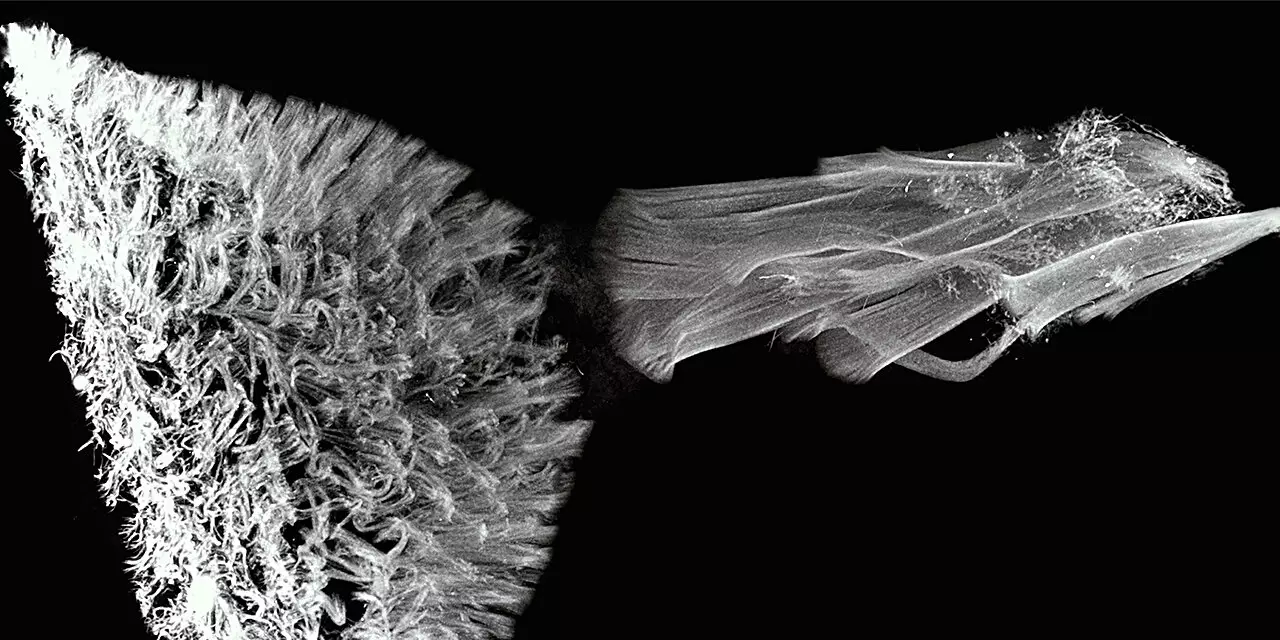The journey of scientific advancement is often marked by significant paradigm shifts, wherein established theories are dislodged and replaced by transformative ideas. The Kanso Bioinspired Motion Lab at USC’s Viterbi School of Engineering stands at the forefront of such intellectual revolutions, consistently publishing groundbreaking research that reshapes our comprehension of biological systems. Their latest paper, “Flow physics guides morphology of ciliated organs,” published in Nature Physics, introduces a compelling narrative that connects the dots between the anatomical structures and fluid dynamics of ciliated organs—an area that has, until now, been cloaked in uncertainty.
Interplay Between Form and Function
At the heart of this research lies a thought-provoking revelation: the morphology of ciliated tissues in various organisms is driven not merely by evolutionary lineage but by specific functional needs. In simpler terms, the design of these vital organs follows the principle of “form follows function.” The lab’s findings lend significant weight to this idea, showcasing that distinct ciliated structures—namely the “carpet” design seen in humans and the “flame” design prevalent in various animal species—are not arbitrarily differentiated. Instead, they each cater to unique physiological requirements for fluid transport, offering a fresh lens through which to view organismal biology.
Dismantling Evolutionary Constraints
Historically, the prevalent notion has been that the different arrangements of cilia stem from an organism’s evolutionary journey. However, Professor Eva Kanso and her collaborators challenge this perspective, proposing that the diversity of ciliated structures arises from mechanical constraints inherent in fluid dynamics. The research introduces a unifying model that elegantly ties together these seemingly disparate designs into a continuous spectrum, anchored by two key parameters: lumen diameter and the cilia-to-lumen ratio. This approach not only demystifies ciliary structure but positions fluid mechanics as a driving force in the evolution of life forms.
The Insights for Medical Science
The significance of these findings extends far beyond academic curiosity; they bear critical implications for medical science and treatment strategies. With ciliated organs involved in essential bodily functions, understanding the mechanics of fluid dynamics paves the way for addressing medical conditions linked to cilia dysfunction, such as bronchiectasis and hydrocephalus. By linking morphological designs with physiological function, this research acts as a vital touchpoint for developing targeted therapies and enhancing our understanding of various pathologies.
One of the standout implications is the study’s potential to refine approaches in fields like nephrology. It proposes that structures derived from ciliary flames—which function to excrete fluids—can offer models to investigate human kidney diseases. This perspective underscores a promising avenue for therapeutic exploration and reinforces the importance of interdisciplinary research in addressing multifaceted health challenges.
A Novel Methodological Approach
The research methodology employed by the Kanso Lab—combining rigorous experimentation with advanced mathematical modeling—serves as a hallmark of innovative scientific inquiry. By overcoming the traditional limitations of studying fluid dynamics in live organisms, the authors have established a framework that merges empirical studies with theoretical predictions. This robust approach not only enhances the accuracy of their findings but also simplifies the understanding of complex biological mechanisms, showcasing how interdisciplinary research can illuminate even the most intricate details of life processes.
Redefining Scientific Complexity
In a field often fraught with convoluted hypotheses, the Kanso Lab’s research exemplifies a remarkable shift toward clarity. By transcending the historical dichotomy between the ‘carpet’ and ‘flame’ designs and recontextualizing them within a continuum, the study simplifies a significant challenge in both biology and engineering. It bridges the gap between basic scientific research and practical applications, emphasizing that sometimes, the essence of discovery lies in re-evaluating established frameworks.
While this research represents a major advancement in our understanding of ciliary function, it simultaneously opens the doorway for further investigations into the roles of automating and optimizing these systems across various biological contexts. The possibilities that emerge from these findings are as vast as they are essential, hinting at a future where science not only explores the mechanics of life but also innovates solutions to some of its most pressing issues.


Leave a Reply